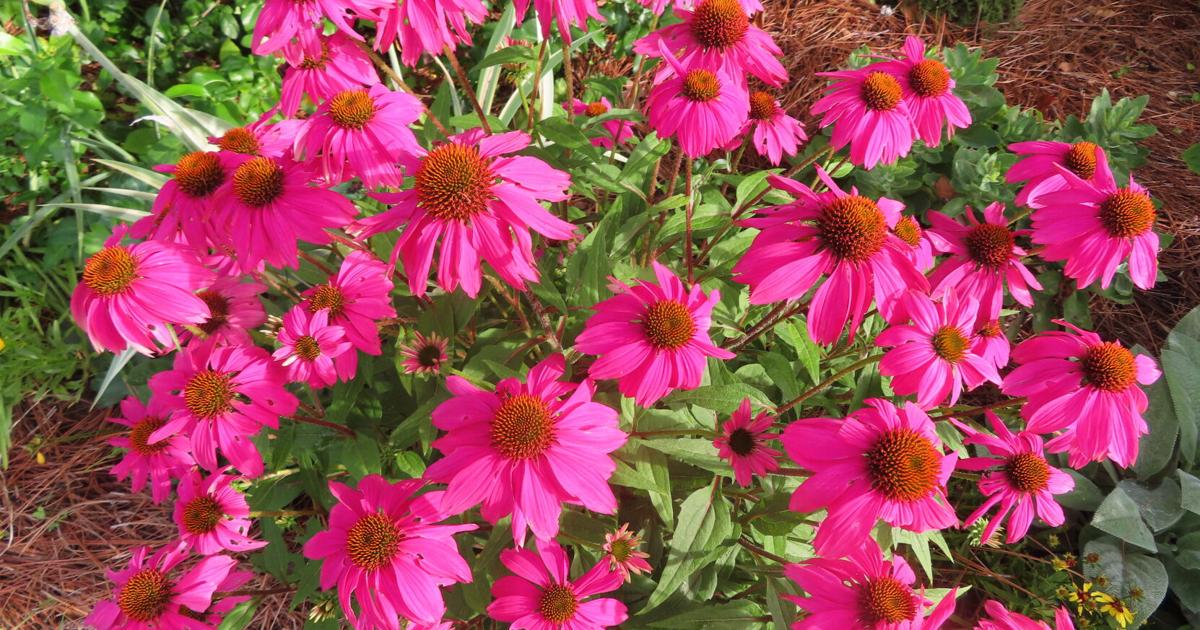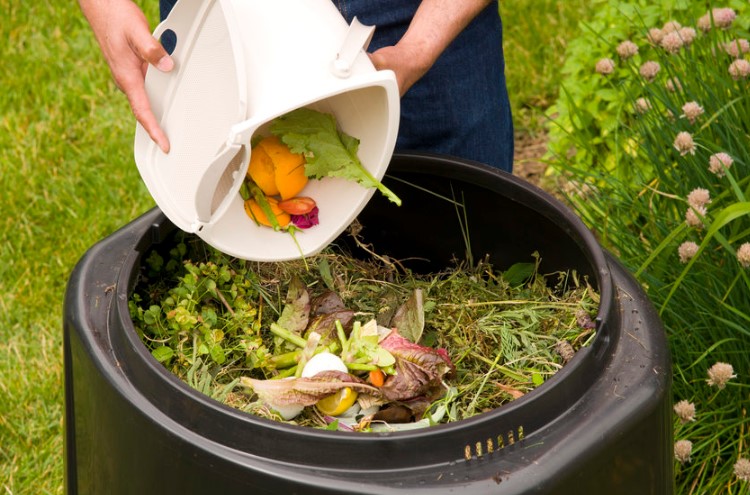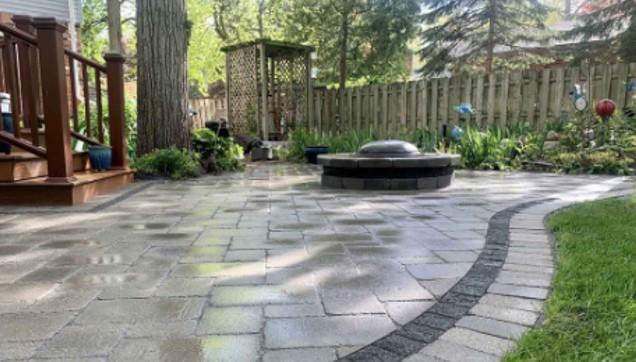Remember these tips to ensure a successful summer in the garden | Home & Garden

It takes a dedicated, tenacious gardener to survive (and thrive) an Alabama summer in the garden. Summers can seem unusually long in our area, beginning before June’s summer solstice and ending days after the first official fall day.
We must be prepared for deluges of rain or drought. I remember years when the rain showed up everywhere but my house, or just never came at all. One particularly tough summer, watering bans forced gardeners to save every drop of usable water — including the water we boiled the pasta in. We lugged buckets from the kitchen sink to needy plants.
We do this all for a reason — our passion for our gardens. Awesome summer annuals, perennials, delightfully fragrant gardenias, fantastic blooms on the hydrangeas and the statuesque lilies make every ounce of sweat worth it. I have been the lone shopper in a local nursery looking for something new on the Fourth of July.
What can we do to lighten summer drudgery, to make life in the summer garden sweeter?
Make a plan, prepare, care, manage and work smarter rather than harder. This idea may not lead to 100 percent success, but it certainly can help. No plan is perfect; with practice, however, it will get better every year, not just every summer.

Plan ahead
Summer is a season of rapid growth requiring more of the gardener and more from the plants.
Our efforts to endure summer should be well on the way before the first day the temperature hits ninety. Choose drought-tolerant or plants especially for xeriscaping — those that help the gardener conserve water. Following the basic rule of gardening, “the right plant in the right place,” is a must. Plants should fit your conditions; place the sun lovers in the sun and the shade lovers in the shade. The sun lovers may not perform as they need the sunlight. The shade lovers battle the sun’s burning rays and droop, requiring massive doses of water to survive. If you are in love with water hogs, place them all together in an easy-to-reach place. Allow the water lovers to be the focal points in your garden.
Keep records
Lists and notes are invaluable. Record special projects in a desk calendar (time to order bulbs, potatoes, or whatever I choose to purchase online, time to plant special items or time to fertilize).
Compile several lists of everything — urgent and non-urgent — to be accomplished in the garden, and a separate list for short work periods of even one hour. Post your list outside to keep you on track. Each day I develop a list of what to do that day, carrying the information on a sticky note in my pocket. I do not use my cell phone for lists. It is too much trouble to take off sweaty gloves to check it. My husband takes a message from landline callers and tells them I am in the bushes. Too easy to get distracted.

Dedicate your time
Set aside time to garden every day, even if it is just a small block of time. I like to go out first thing in the morning — if I have someplace to be, I get up earlier. During this short period, I might weed, water or deadhead spent flowers. I use my time to take on the most urgent jobs and not get too taken up with things that might be able to wait until I have a larger chunk of time. I include a long work session in my weekly calendar, including a more intensive to do list. Every minute in the summer garden matters. I have a tendency to get off task; my sticky note brings me back to reality.
Our preparations for the summer growing season should have begun before the heat arrived, including amending our soils and performing a soil test recently. Never too late!
Plant correctly
It is not just essential to have the right environment — it is also vital to put that plant in the ground correctly. Plants, especially many of our shrubs (camellias, azaleas) and trees resent being buried instead of planted. Do it right and do it once. Place the top of the root ball at least an inch over ground level. Your job is not done until that plant has been watered and mulched. Planting shrubs in the summer can be hard on a plant; it can be done, however, with good care.

Consider the weather
Our humidity is terrible. We cannot change it, only deal with it. Some plants, like all gardeners, are not fans of the humidity. Set plants where they have plenty of light and good air circulation. Vegetables, like tomatoes, spaced too closely are apt to fall victim to hot weather diseases.
I mulch my entire landscape in the late winter; however, I always lightly mulch all newly placed plants. We know the drill: mulch keeps down weeds, conserves the moisture, keeps the soil from crusting and helps to amend the soil. Mulch protects our amazing plants from attack by the weed eater. Mulch can also make flower beds look more coherent. Mulch makes everything look prettier.
Additionally, I mulch all my containers. It protects the soil on top of the containers and prevents it from crusting. I even mulch my vegetables. I do not immediately cover my newly planted seeds with mulch — they need time to germinate.
Destroy the weeds
Not only are the plants growing like crazy, but so are the weeds. If you have an enemy like mulberry weed, stay on it. This brute will quickly reproduce and take over. Weeds in large clumps can get fairly unsightly, use your nutrients and moisture, and crowd out your plants. Never let a day pass without pulling weeds. You will be sorry! Learn your weeds. So many are terribly invasive.
I actually find weeding and deadheading to be therapeutic. A lot of bang for the buck!
Learn to recognize poison ivy. Proper disposal of this itchy plant is essential. Disposable gloves on and plastic bags covering my arms, I grab a good hold with one hand, placing the vine in one bag quickly but carefully, and put the whole thing in a second bag. The oil in poison ivy can stick to anything from tools to clothes to puppies.
By nightfall, I have run out of steam; thus using this time to relax and stroll the garden, take pictures in a beautiful light and, perhaps, compose a sticky note for the next day. Time spent enjoying our gardens is as important as the time we spend taking care of them.
Watch for diseases and pests
Scouting the garden, especially the vegetable garden, is vital in the summer (and all year) to watch for diseases and pests needing immediate attention. I have been dropping Japanese beetles in a bucket of water and dish detergent. Pursuing lubber grasshoppers through the garden and crushing them is a daily effort. Saw flies are on my roses and my hibiscus, causing the leaves to resemble lace doilies. I might pull up a stool and pick the tiny caterpillars off the leaves. Now I am just cutting off the spent leaves in hopes of trapping a few of these tiny crawlers.
A gardener suggested that before we pick up our phones or turn on the computers, we walk outside, perhaps with a cup of coffee, and admire our handiwork (or note the issues). There is that sticky note again.
I am not a fan of pesticides; instead I use other methods to handle issues, usually involving manual efforts. My garden is home for the pollinators, and avoiding unintended consequences is a priority. Be knowledgeable of how to handle diseases and insect pests; if you must spray, pick the least harmful product and follow the directions exactly.
Make things easy on yourself
Prepare for any situation when you start your gardening day. Refer to the to do list and gather tools and supplies in a bucket. Pack an extra, as it is a nuisance to stop every few minutes to retrieve another tool. Collect wayward tools when you finish for the day to prevent hunting for the tool tomorrow.
I installed two mailboxes in the garden — one in the front and one in the back — and filled them full of anything I might need. My husband uses them to store his plastic bags for dog cleanup.
Add sunscreen, band aids, cleaning wipes, insect repellant, extra tools, whatever might be handy. We all probably need a port-a-potty. It is tempting once we go in the air conditioning to stay there.
As a novice and experienced gardener, I used too much effort getting rid of my debris, making repeated trips to throw things away. No more. I added colorful trub buckets, large tough yard bags, and two wheelbarrows to save steps. Cleanup is almost a breeze.
If you have a compost pile, two baskets are a good thing — one for the trash and one for the good stuff. I am learning.
Use the right tools
Sharp, clean tools are a gardener’s best friends. A sharp tool can actually lighten the job. Clean your pruners between plants, if you suspect disease. Duplicates can reduce the time spent searching for something accidentally misplaced.
There are fabulous long reach pruners on the market that enable us to reach taller limbs without climbing a ladder. Ladders are forbidden in my garden (two senior residents).
Battery operated tools are great — no gas to buy, much lighter and quieter. Be careful. My spouse was helping me pick up trash and I was carrying my pruner in my hand. Our hands met in the wrong way and I broke the bone in his thumb and split it wide open. The garden is more satisfying than the emergency room. Now when I use that tool, I stay far away from others.
Water correctly
Water and proper watering methods are essential to a happy gardener and a healthy plant, especially in the summer when dry days are frequent. The best time to water is in the morning between 4 a.m. and 9 a.m., allowing plant foliage to dry out before nightfall and preventing evaporation in the noon heat. It is best practice, especially for vegetables, to water the root instead of the foliage. Avoid overhead watering and use drip irrigation when possible. I have some drip irrigation, but way too many plants to drip my entire yard.
It is also helpful to place rain gauges around the garden to see how much water you actually receive at your house. Lawns are the biggest users of water in the summer. Place small cans around the lawn to measure the amount of water your lawn receives. Sometimes gardeners let their summer lawns go dormant, causing the grass to turn an ugly shade of brown. The first rainfall will perk it right up.
If getting up at four to water is not part of your day, there are wonderful timer gizmos. By the time you are ready for your morning stroll, everything has had its water for the day. Containers may need water more than once a day as summer progresses and the temperatures heat — the plants get pot bound and demand more water.
Determine the moisture level in the soil with a finger stick. Plants could be much drier or wetter. I know nothing about water meters; I know my finger is usually always correct.
Confirm hoses and irrigation systems are in good order before the season begins. Check your system during the season to be certain your system is doing its job. My inattention has caused areas to float and plants to die. I once discovered my drip irrigation had a minor geyser and the water was gushing over the fence.
Watering wands allow the gardener to get close to the roots and avoid the foliage. They make watering more fun.
The days of using heavy hoses labeled commercial and kink-free have passed. The light hoses have improved and save our backs. A bit of research can help pick a sturdy one. Even some hose reels are better and easier than others. Use hose guides around fragile flowers; otherwise it is possible to crush your plants. Some guides are as decorative as practical.
Watch out for that summer time health risk and great annoyance, mosquitoes. Empty anything where water can collect; refresh the water in the bird baths. Some like to place deep saucers of water under their containers. If these sit too long, mosquitoes will congregate there also. It is better to empty and refill as needed.
The biggest summertime survival tip is not to take on more than you can care for, whether flowers, lawns or vegetables. Make your garden a fun place, not a frustrating one.
Take lots of pictures. They will remind you how amazing your garden is and be your garden brag book. The photos are also a permanent record of how your garden grew.
Enjoy summer; it will not last forever. It will be twenty degrees before we turn around and we will be saying under our breath “I can not wait until it gets warmer.”
Sherry Blanton, “The Southern Gardener,” writes about gardening for The Anniston Star. Contact her at [email protected]. Follow her on Facebook at Southern Gardener-Anniston Star.








